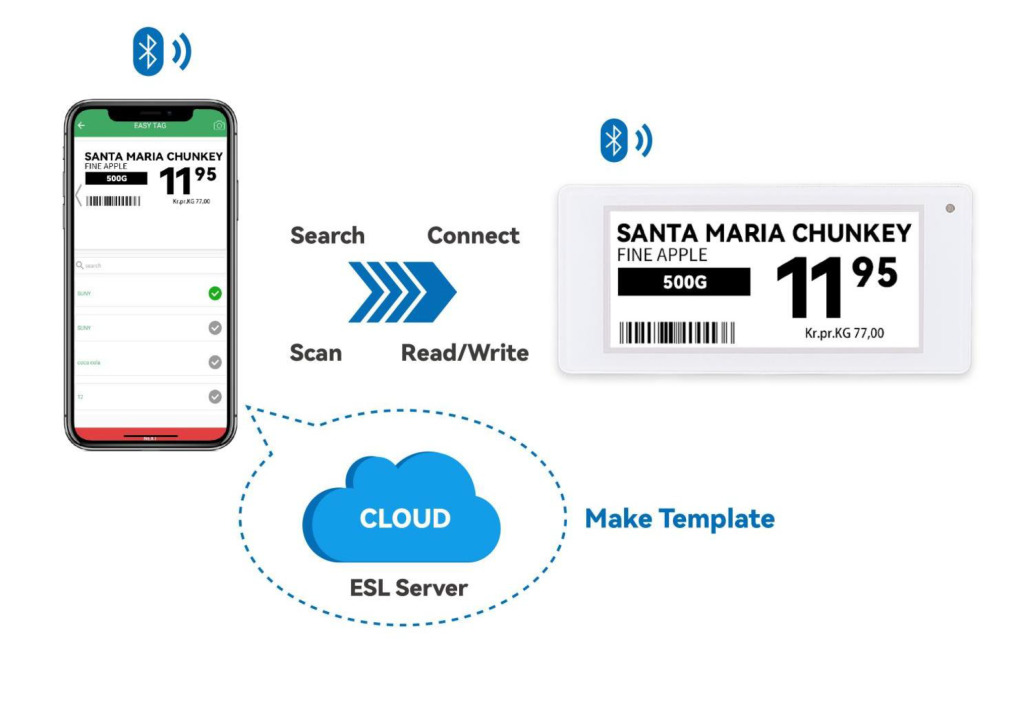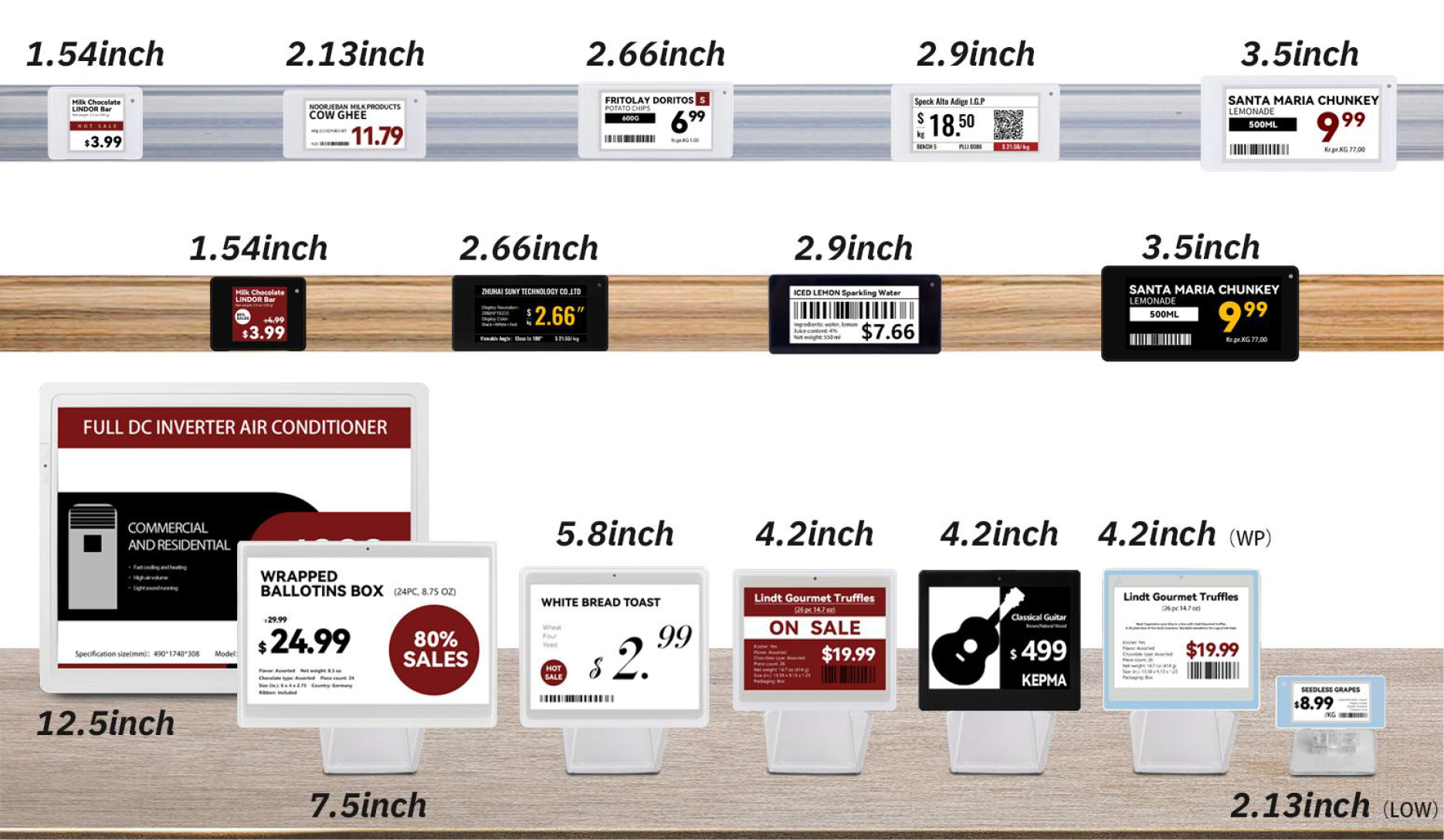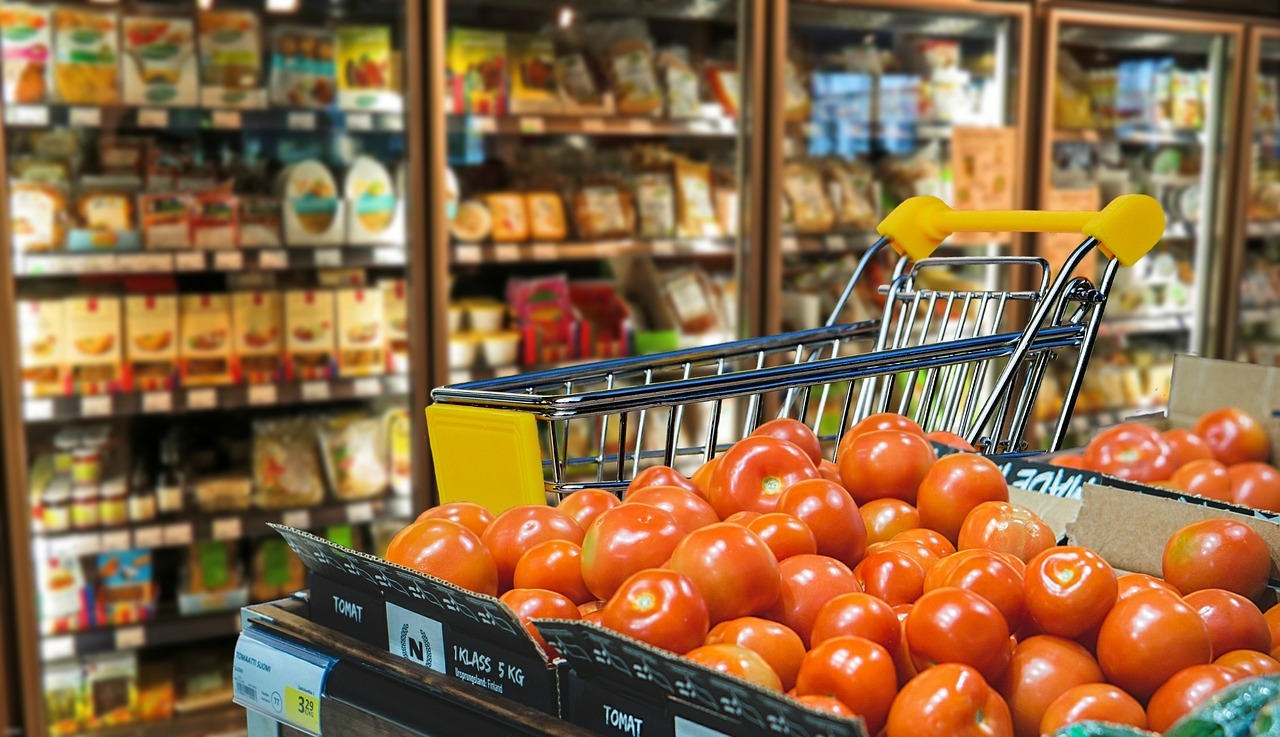In today’s fast-paced retail environment, efficiency and accuracy are paramount. One of the innovative technologies that have emerged to address these needs is the Bluetooth Electronic Shelf Label (BLE ESL). These digital price tags are revolutionizing how retailers manage their inventory and pricing. But how exactly do they work? Let’s dive into the principles behind BLE ESL.
What is a Bluetooth Electronic Shelf Label?
A Bluetooth Electronic Shelf Label (BLE ESL) is a digital display device that uses Bluetooth Low Energy (BLE) technology to communicate and update pricing and product information on retail shelves. Unlike traditional paper labels, BLE ESLs offer dynamic and real-time updates, enhancing operational efficiency and customer experience.
Key Components of BLE ESL
- Digital Display:
The core of an ESL is its digital display, typically using e-ink technology. E-ink displays are energy-efficient and provide high visibility, even in bright lighting conditions. They can show various information such as price, product name, promotions, and even QR codes. - BLE Module:
The BLE module is responsible for wireless communication. It allows the ESL to receive updates from a central system or gateway. BLE technology is chosen for its low power consumption and reliable connectivity over short distances. - Central Management System:
This system, often cloud-based, manages all the ESLs in a store. It sends updates and commands to the ESLs via Bluetooth gateways. The central system can be integrated with the store’s inventory and pricing management software for seamless operations. - Battery:
ESLs are powered by small batteries, which can last several years due to the low power consumption of e-ink displays and BLE technology.
How Does BLE ESL Work?
- Data Preparation:
The central management system prepares the data that needs to be displayed on the ESLs. This data includes pricing, product information, and any promotional details. - Data Transmission:
The prepared data is transmitted wirelessly from the central management system to Bluetooth gateways placed strategically around the store. These gateways act as intermediaries, relaying the data to the ESLs. - BLE Communication:
Each ESL has a unique identifier, allowing the system to send specific updates to individual labels. The BLE module in the ESL receives the data and processes it. - Display Update:
Once the data is received, the ESL updates its e-ink display to show the new information. This process is quick and efficient, ensuring that the information on the shelves is always up-to-date.
Advantages of BLE ESL
- Real-time Updates: Prices and product information can be updated instantly, eliminating the need for manual label changes.
- Accuracy: Reduces human error in pricing and ensures consistency across all labels.
- Cost-effective: Although the initial investment is higher, the long-term savings on labor and paper labels are significant.
- Enhanced Customer Experience: Provides clear and accurate information, improving the shopping experience.
Conclusion
Bluetooth Electronic Shelf Labels (BLE ESL) represent a significant advancement in retail technology. By leveraging BLE technology and e-ink displays, these labels offer a reliable, efficient, and cost-effective solution for modern retail environments. As technology continues to evolve, we can expect even more innovative applications of BLE ESL in various industries.


